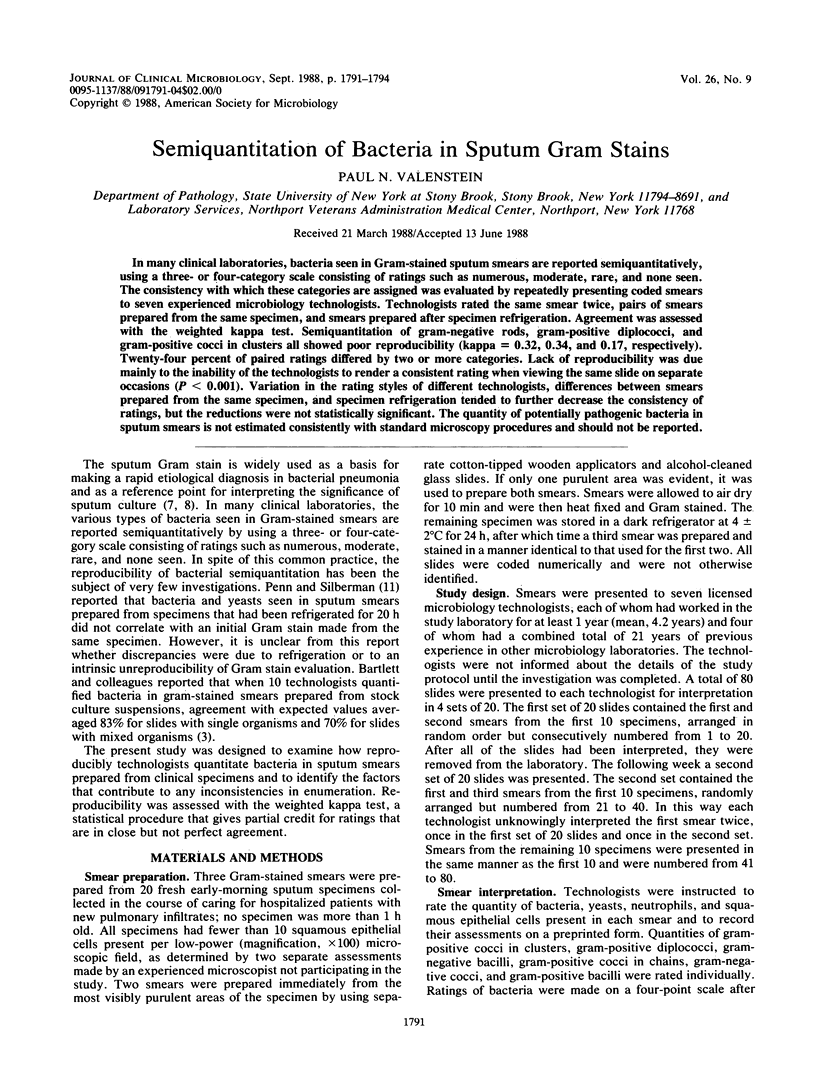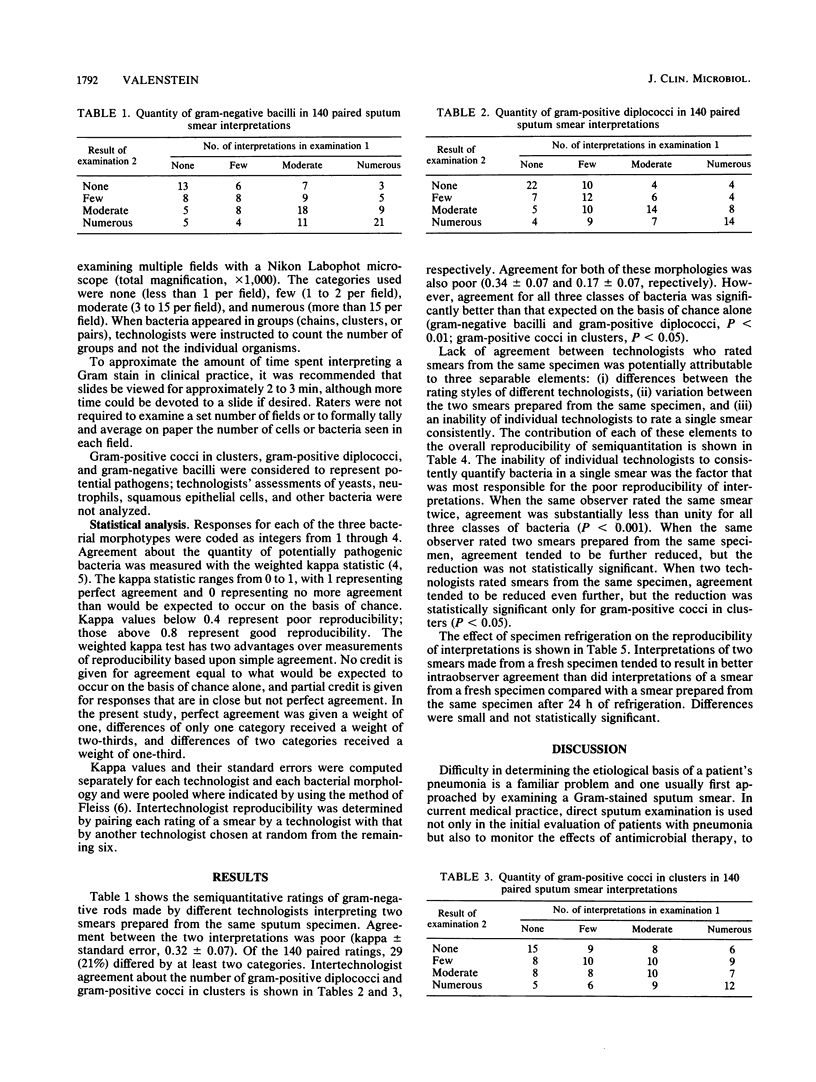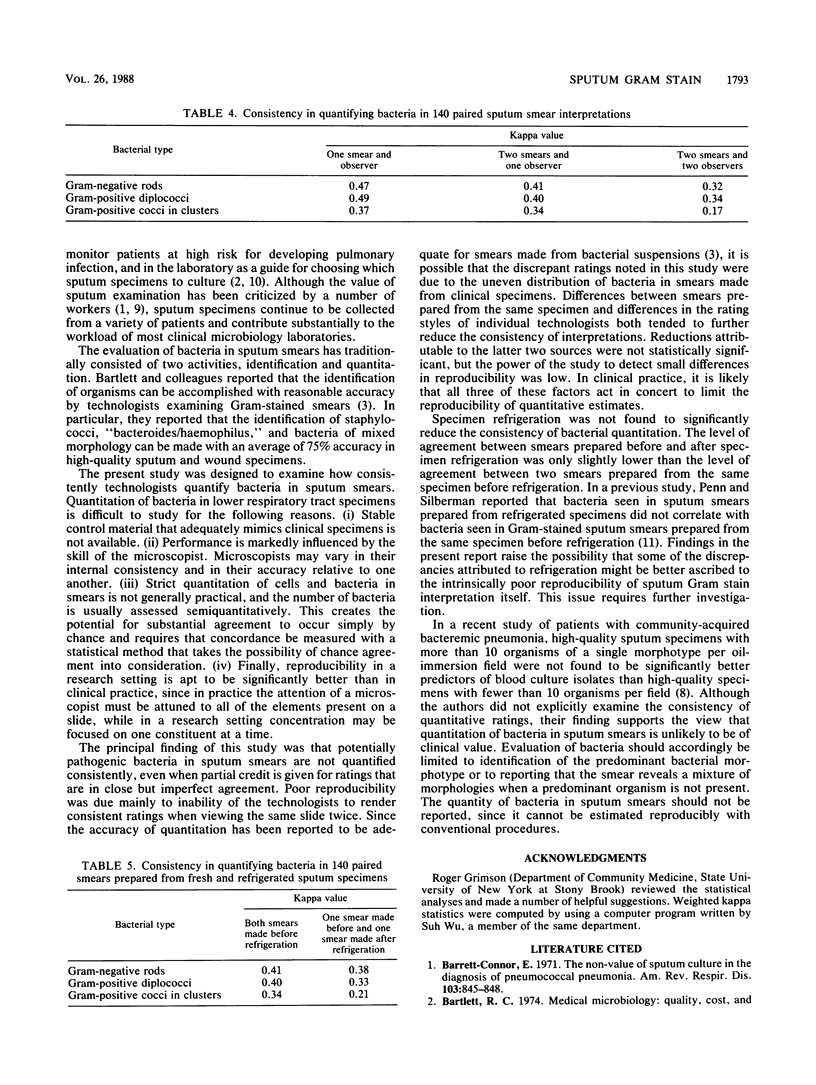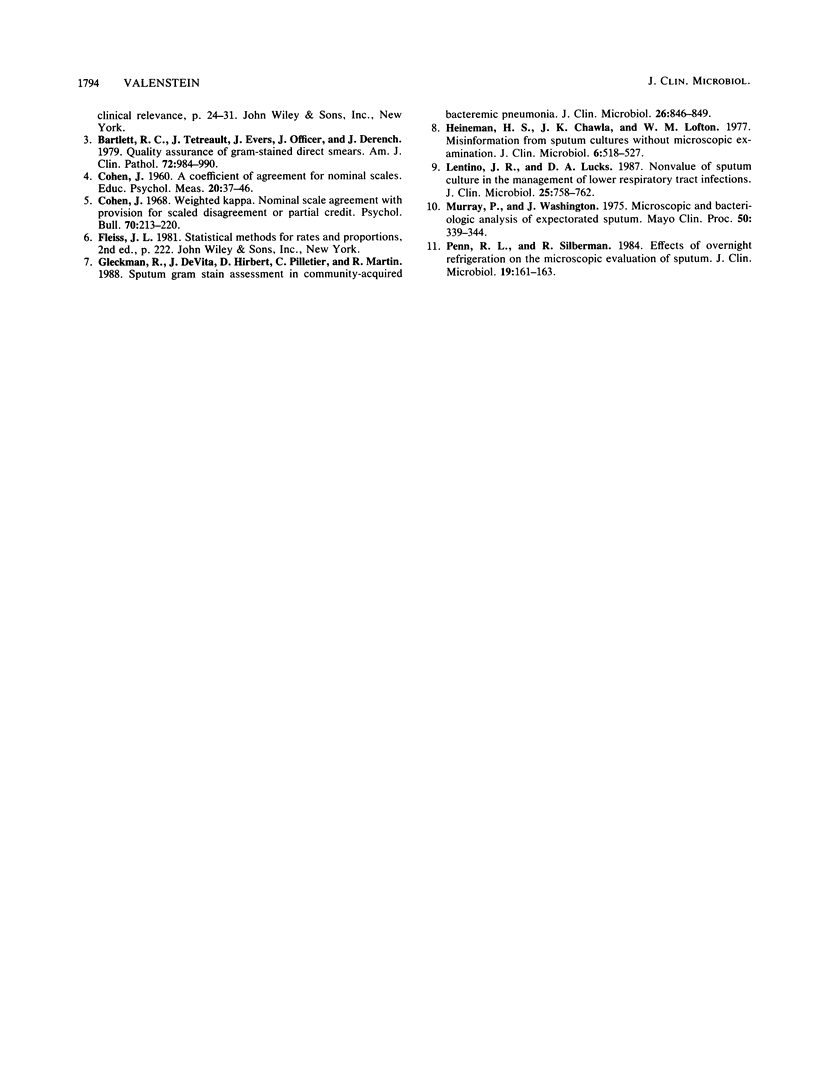Abstract
In many clinical laboratories, bacteria seen in Gram-stained sputum smears are reported semiquantitatively, using a three- or four-category scale consisting of ratings such as numerous, moderate, rare, and none seen. The consistency with which these categories are assigned was evaluated by repeatedly presenting coded smears to seven experienced microbiology technologists. Technologists rated the same smear twice, pairs of smears prepared from the same specimen, and smears prepared after specimen refrigeration. Agreement was assessed with the weighted kappa test. Semiquantitation of gram-negative rods, gram-positive diplococci, and gram-positive cocci in clusters all showed poor reproducibility (kappa = 0.32, 0.34, and 0.17, respectively). Twenty-four percent of paired ratings differed by two or more categories. Lack of reproducibility was due mainly to the inability of the technologists to render a consistent rating when viewing the same slide on separate occasions (P less than 0.001). Variation in the rating styles of different technologists, differences between smears prepared from the same specimen, and specimen refrigeration tended to further decrease the consistency of ratings, but the reductions were not statistically significant. The quantity of potentially pathogenic bacteria in sputum smears is not estimated consistently with standard microscopy procedures and should not be reported.
Full text
PDF



Selected References
These references are in PubMed. This may not be the complete list of references from this article.
- Barrett-Connor E. The nonvalue of sputum culture in the diagnosis of pneumococcal pneumonia. Am Rev Respir Dis. 1971 Jun;103(6):845–848. doi: 10.1164/arrd.1971.103.6.845. [DOI] [PubMed] [Google Scholar]
- Bartlett R. C., Tetreault J., Evers J., Officer J., Derench J. Quality assurance of gram-stained direct smears. Am J Clin Pathol. 1979 Dec;72(6):984–989. doi: 10.1093/ajcp/72.6.984. [DOI] [PubMed] [Google Scholar]
- Gleckman R., DeVita J., Hibert D., Pelletier C., Martin R. Sputum gram stain assessment in community-acquired bacteremic pneumonia. J Clin Microbiol. 1988 May;26(5):846–849. doi: 10.1128/jcm.26.5.846-849.1988. [DOI] [PMC free article] [PubMed] [Google Scholar]
- Heineman H. S., Chawla J. K., Lopton W. M. Misinformation from sputum cultures without microscopic examination. J Clin Microbiol. 1977 Nov;6(5):518–527. doi: 10.1128/jcm.6.5.518-527.1977. [DOI] [PMC free article] [PubMed] [Google Scholar]
- Lentino J. R., Lucks D. A. Nonvalue of sputum culture in the management of lower respiratory tract infections. J Clin Microbiol. 1987 May;25(5):758–762. doi: 10.1128/jcm.25.5.758-762.1987. [DOI] [PMC free article] [PubMed] [Google Scholar]
- Murray P. R., Washington J. A. Microscopic and baceriologic analysis of expectorated sputum. Mayo Clin Proc. 1975 Jun;50(6):339–344. [PubMed] [Google Scholar]
- Penn R. L., Silberman R. Effects of overnight refrigeration on the microscopic evaluation of sputum. J Clin Microbiol. 1984 Feb;19(2):161–163. doi: 10.1128/jcm.19.2.161-163.1984. [DOI] [PMC free article] [PubMed] [Google Scholar]


